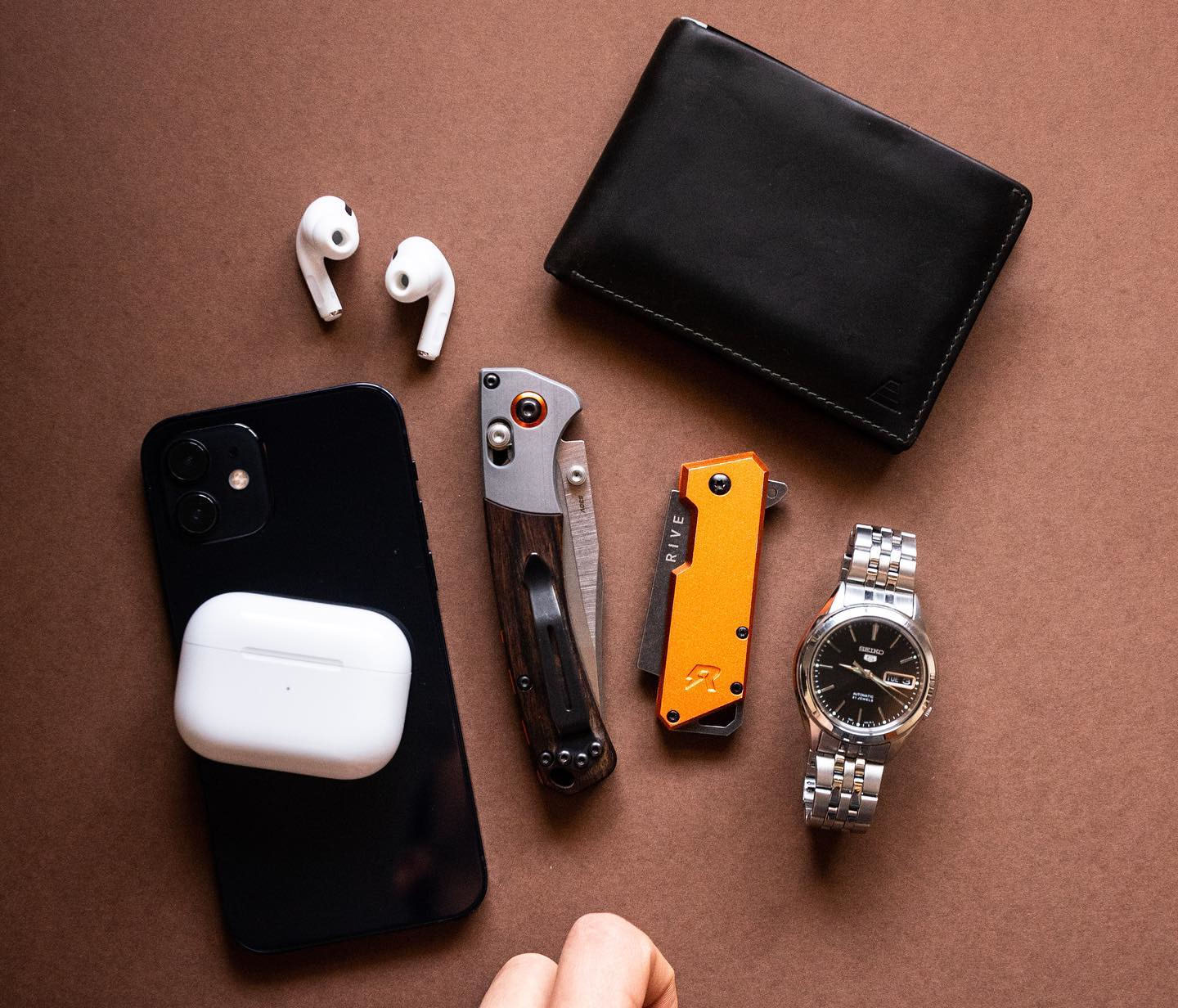Disclaimer: Although we base all of our reviews on both our product testing and that of other customer reviews. That being said, this website contains affiliate links for products we talk about. You don’t pay any more for any products you purchase by clicking on links but we might receive a small commission for our recommendation to those products we link to.
Being prepared is more than just a motto; it’s a mindset that can make a crucial difference when the unexpected happens.
Over decades of training, serving in law enforcement, and real-world experience, I’ve refined a set of EDC (everyday carry) essentials that go beyond gadgets and gear.
Here’s my updated, value-added guide to the must-haves for effective preparedness and peace of mind.
1. Your Mindset & Experience
The most powerful tools in your arsenal aren’t carried in your pockets—they’re within you. No gear can replace critical thinking, calm under pressure, and practical experience.
Training your mind to stay composed and make smart choices in a crisis is non-negotiable. Invest time in learning situational awareness, emergency response, and self-defense.
Tip: Take a moment every day to mentally rehearse what you would do in various emergencies, from medical issues to natural disasters.
2. Wallet Essentials
Carry identification, a credit/debit card, some emergency cash, and a small supply of Band-Aids. Include any necessary medical cards.
While digital payments are great, technology can fail, so a bit of old-fashioned cash goes a long way in power outages or emergencies.
Pro Tip: Tuck a few waterproof matches or an emergency contact card inside your wallet.
3. Handkerchief
A handkerchief is more versatile than most people realize. Use it to stop bleeding, as an impromptu dust mask, or even as a tourniquet in a pinch.
It takes up minimal space and adds value in both medical emergencies and daily tasks.
4. Reliable Phone
A charged phone is your lifeline—for communication, navigation, and information. Remember, transmitting a text can be more reliable than calling in disaster scenarios when networks are overloaded.
Practice conserving your battery by turning off your phone when not in active use during prolonged emergencies.
Additional Tip: Store key emergency contacts labeled “ICE” (In Case of Emergency), and consider loading essential medical and ID information into your phone’s lock-screen.
5. Keys (and Vehicle Preparedness)
Always have your house and vehicle keys in a secure, accessible spot. A reliable car can serve as a mobile survival station, so keep extra walking shoes and a go-bag in your vehicle.
If you park in a garage, don’t rely only on electronic openers; a physical key could save you time and hassle.
6. Pen
A sturdy pen is both a practical writing tool and a last-resort self-defense item. You can carry it through airport security, too.
Choose a reliable tactical pen that writes well and could serve in a pinch as an impact tool.
7. Paper or Notepad
Keep a few durable 3×5 cards or a compact notepad. Writing down license plates, addresses, or quick notes is faster and more reliable than relying solely on your phone battery.
8. Knife (Primary and Backup)
A quality knife is indispensable for protection, utility, and emergencies. Carry a dedicated self-defense blade and a second, smaller multi-tool or Swiss Army knife for opening packages, minor repairs, or even tweezing out splinters. Ensure you’re trained and legally allowed to carry these in your locality.
Tip: Practice regularly to deploy and use your knife safely and efficiently.
9. Compact Flashlight
A powerful penlight, like the Streamlight MicroStream, can clip onto hats for hands-free work, illuminate dark parking lots, or signal for help.
Choose a model with reliable battery life and consider always carrying a spare battery or rechargeable version.
10. Concealed Firearm (Where Legal and Trained)
For those with proper training and permits, a reliable, compact firearm like the Sig Sauer P365 can provide personal protection. Along with the gun, carry:
11. Spare Ammunition
Keep an extra magazine with quality self-defense rounds, such as Speer Gold Dot JHP or Sim-X. Make sure your spare magazine is accessible and you’re familiar with quick reloads under stress.
12. Quality Holster
A secure, comfortable holster (such as StickyHolster) and a durable, tactical belt are non-negotiable for safe concealed carry.
Your holster should retain your firearm during sudden movement and allow for a quick, safe draw.
13. Tactical Belt
Invest in a belt designed for carrying gear and firearms, like Kore Essentials, to ensure comfort and performance without sacrificing everyday style.
14. Comfortable Footwear and Weather-Appropriate Clothing
Don’t underestimate the importance of good shoes. Choose supportive, durable pairs (Hoka or Cole Haan recommended), and wear quality socks (like Darn Tough) for reliable comfort. Consider weather conditions; a hat minimizes heat loss in cold, and breathable layers (like Arc’teryx) provide year-round adaptability.
15. Bonus Items for Added Preparedness
- Multi-tool: For flexibility in minor repairs, cutting, and opening.
- Emergency Contacts: Both written and digital.
- Small First Aid Kit: Compact kits fit in a glove box or go-bag.
- Sunscreen & Lip Balm: Protects against the elements during extended outdoor exposure.
Quick-Reference EDC Packing List
- Brain & experience (ongoing training)
- Wallet (ID, cash, cards, bandages)
- Handkerchief
- Mobile phone (preloaded with key info)
- Key ring (house, car, backup)
- Pen (tactical if possible)
- Notepad/3×5 cards
- Self-defense knife (with training)
- Everyday utility knife/multitool
- Flashlight
- Concealed firearm (where legal)
- Extra magazine/ammo
- Holster
- Quality belt
- Reliable shoes & all-weather clothing
Staying prepared doesn’t have to mean packing like a survivalist at all times. It’s about intentionality, continual learning, and tailoring your carry to your needs and legality in your area.
Mastering your EDC can provide peace of mind, empower you to help others, and keep you calm and effective in life’s unexpected situations.


0 responses to “15 EDC Items You Shouldn’t Leave Home Without”